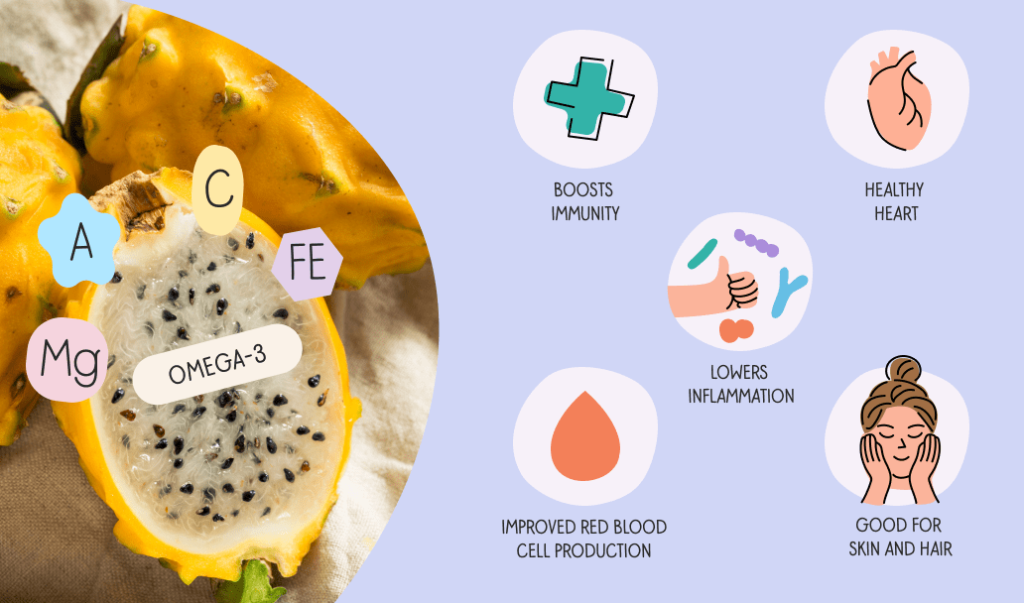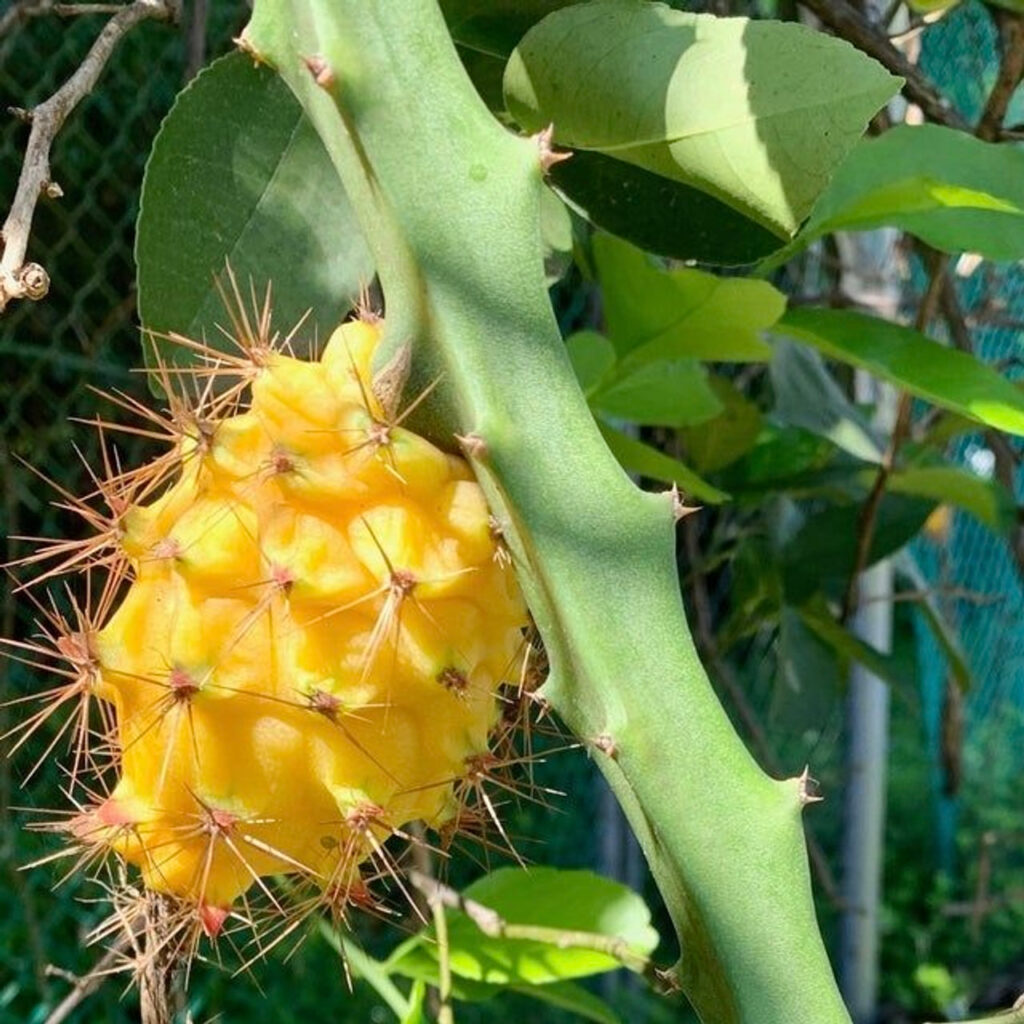In the realm of exotic fruits, the spotlight often shines on the captivating yellow dragon fruit, also known as pitaya amarilla. This lesser-known sibling of its more common red-skinned counterpart not only entices with its vibrant appearance but also offers a unique array of health benefits and a delectable taste experience.
Table of Contents
Dragon Fruit: A Golden Elixir for Health and Taste

A Visual Feast: Unveiling the Yellow Dragon Fruit
Botanical Brilliance
The golden dragon fruit, scientifically classified as Hylocereus megalanthus, belongs to the cactus family. Its striking yellow skin, adorned with greenish scales, encases a sweet and mildly tangy flesh speckled with tiny black seeds. This visual spectacle not only appeals to the senses but also hints at the nutritional richness within.
Nutrient Profile: A Symphony of Goodness
The golden dragon fruit shares its nutritional profile with its red-skinned sibling but has its unique charm. Bursting with vitamin C, fiber, and essential antioxidants, it stands as a testament to the potential health benefits concealed beneath its bright exterior.
Health Benefits of Yellow Dragon Fruit

Immune-Boosting Powerhouse
The abundance of vitamin C in this dragon fruit contributes to its immune-boosting prowess. This essential vitamin is renowned for supporting the body’s defense mechanisms, helping ward off illnesses, and promoting overall well-being.
Dietary Fibre for Digestive Wellness
The golden dragon fruit’s flesh is a rich source of dietary fiber, aiding in digestive health. Fibre promotes a healthy gut environment, regulates bowel movements, and may contribute to weight management by inducing a feeling of fullness.
Antioxidant Defence Against Free Radicals
Just like its red-skinned counterpart, the dragon fruit boasts a robust antioxidant profile. These antioxidants act as vigilant guardians, neutralising free radicals that can lead to cellular damage and inflammation, potentially contributing to chronic diseases.
Culinary Delight: Embracing the Taste of Yellow Dragon Fruit

Flavour and Texture
Beyond its health benefits, the golden dragon fruit offers a culinary adventure. Its flesh, reminiscent of a tropical melody, combines sweetness with a subtle tanginess, creating a taste experience that resonates with the exotic locales where it thrives. The crunch of the tiny seeds adds a delightful textural dimension.
Culinary Applications
Embracing the golden dragon fruit in the kitchen opens the door to a myriad of culinary possibilities. From refreshing smoothie bowls and vibrant fruit salads to exotic desserts, its versatility enhances both the visual appeal and nutritional value of various dishes.
Sustainability and Growth: A Tropical Triumph

Ideal Growing Conditions
Golden dragon fruit thrives in tropical climates, with an affinity for warm temperatures and well-drained soil. Its hardiness and adaptability make it a sustainable crop in regions with suitable conditions, contributing to local agricultural economies.
Low Environmental Impact
The cultivation of dragon fruit, in general, is known for its low environmental impact. Its cactus-like nature requires minimal water, making it a water-efficient crop. Additionally, the fruit’s resilience to pests reduces the need for harmful pesticides.
Conclusion: A Radiant Addition to the Fruit Spectrum
In the world of fruits, the yellow dragon fruit stands as a radiant addition to the spectrum of flavours, benefits of yellow dragon fruit, and nutritional treasures. Beyond its captivating appearance and delectable taste, it offers a wealth of health benefits, from immune support to digestive wellness.
As we savour the golden sweetness of the yellow dragon fruit, let it remind us of the diverse and nourishing gifts that nature bestows upon us. Whether enjoyed fresh or incorporated into eatery creations, this tropical gem invites us to embrace both the vibrant hues of its flesh and the vitality it brings to our health and well-being.
